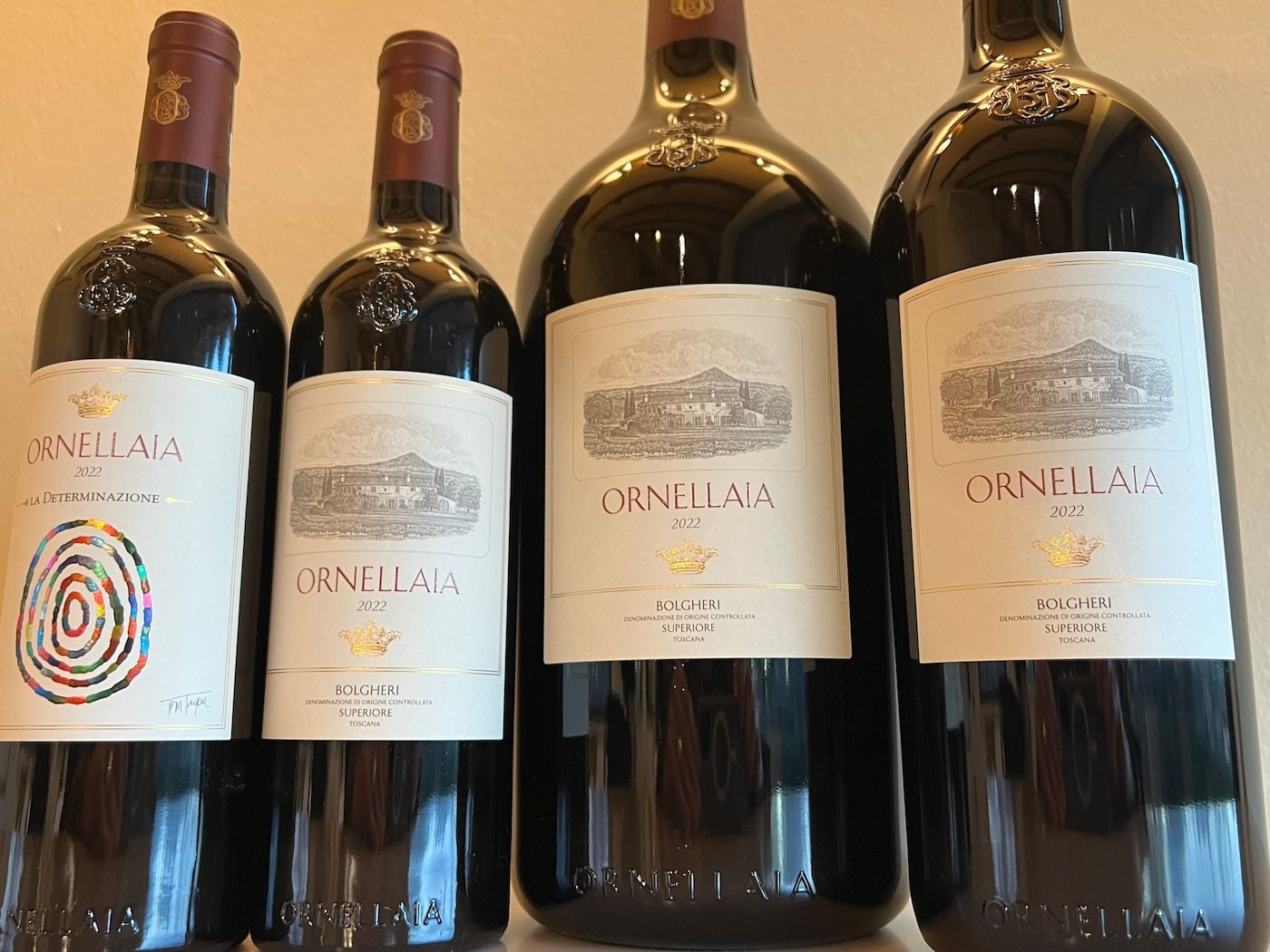The pursuit of rotundone starts in Southeast France and takes us on a tour of Australia, California, Spain, Argentina and Northern Italy
We are fortunate to live in a world where we have a vast array of grape varieties planted worldwide; indeed Jancis Robinson, Julia Harding and José Vouillamoz included 1,368 varieties in their Wine Grapes bible.
We have previous generations to thank for this omnipresence of grape varieties. Certain grapes that are particularly capable of expressing their site, enable us to gain a glimpse into specific mesoclimates (or climate of a specific vineyard). Today, lesser-known grape varieties are starting to find homes in the New World, on land previously unplanted to vinifera, such as Petit Manseng in Virginia and the Clare Valley, Rkatsiteli in the Finger Lakes and the likes of Catarratto and Fernão Pires in the Swartland.
Plantings of grapes away from their native homes for high-quality wine production are largely possible due to two factors: geology and specific mesoclimates.
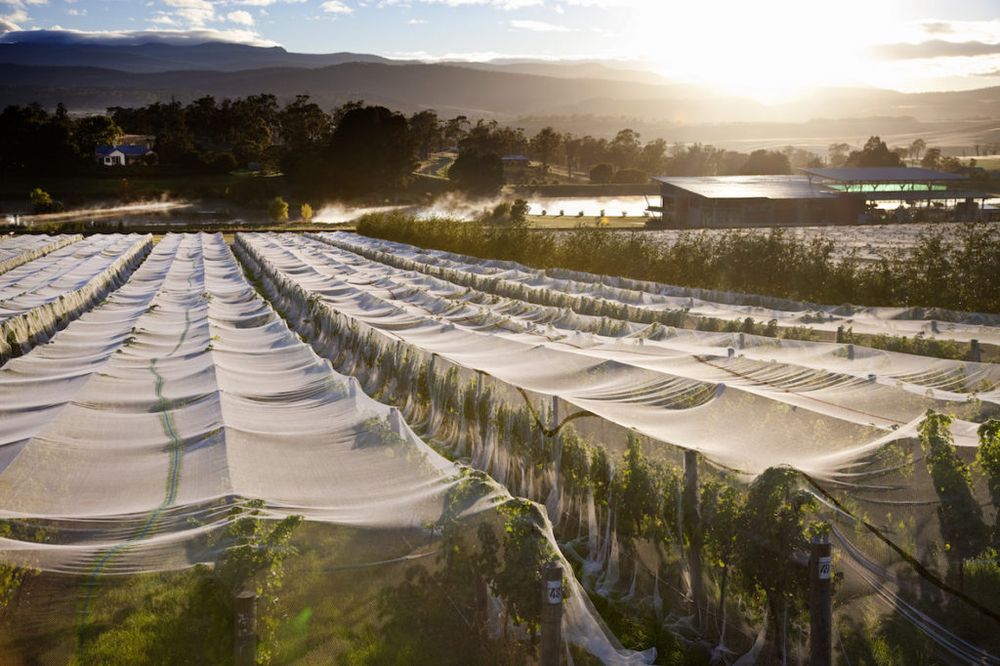
The vineyards at Josef Chromy, Tasmania, Australia.
In pursuit of peppery Syrah
Known for its ability to express terroir, Syrah is native to south east France, but has found several other homes further afield. It first appeared on Australian soils in the 1830s via James Busby, who travelled through France and Spain collecting plant material. Today, the Aussie phenomenon of ‘Shiraz’, which was adopted in the mid-nineteenth century, has become a global vinous success story.
Syrah/Shiraz is particularly interesting when grown in cool pockets due to higher production of rotundone, the compound (sesquiterpene ketone) that causes spice notes in wines (particularly white and black pepper), and which has become highly sought after by us ‘pepper-wine’ fiends.
We owe immense gratitude to the Australian Wine Research Institute (AWRI), whose extensive work on rotundone means that we are able to understand more about the cause of this desirable characteristic.
Cool climate: when the ‘hot spots’ are cold
Damien Sheehan, viticulturist of Mount Langi Ghiran in Victoria, says: “When sampling fruit from the vineyards in the lead up to harvest we always knew that there were ‘hot spots’ where we would seek out peppery berries, however we hadn’t applied a scientific lens over that experience. Now, through our work with the AWRI, we know that those areas of the vineyard that experience the coolest conditions over the course of a growing season are the most likely to produce rotundone, with factors such as aspect, exposure, row-orientation and canopy architecture all playing a role.”
He continues: “Tasting a truly peppery berry is one of life’s great pleasures, it is utterly seductive – the combination of ripe fruit and that sudden explosion of pepper in the mouth is unforgettable. That’s why we all knew where we should be looking.”
We also know that rotundone increases during later stages of ripening. This lends support to the notion that Syrah/Shiraz produces more pepper notes in cooler patches of land. It leaves us wondering ‘Could this be the case for other spicy varieties too?’
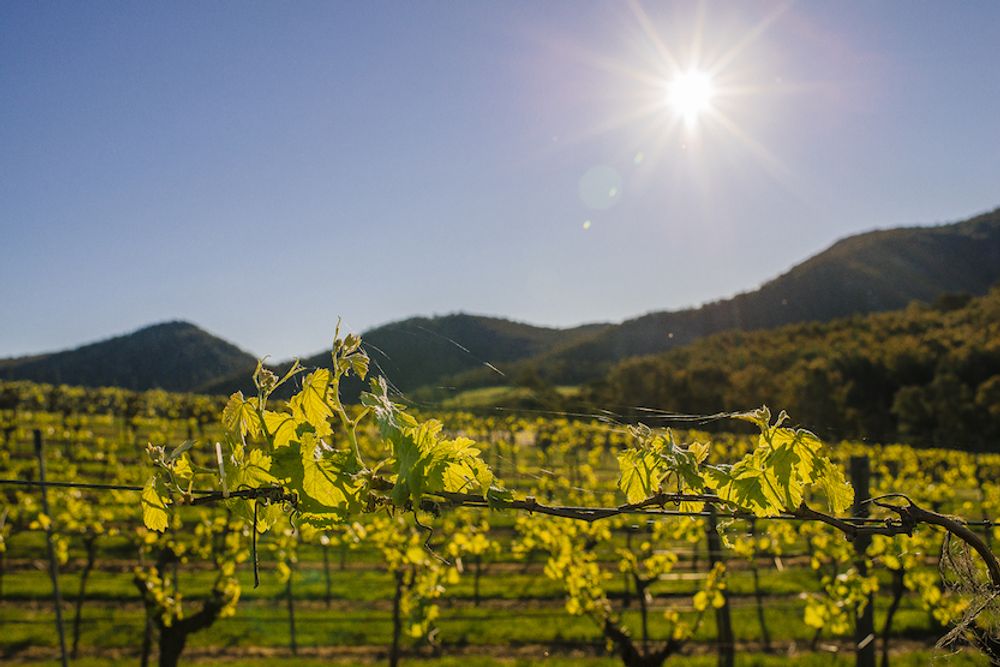
Mount Langi Ghiran, Victoria, Australia.
How cool is cool?
At 18.4°C, Mount Langi Ghiran’s average January temperature (mid-summer in the southern hemisphere) is lower than the surrounding district’s at 20.2°C, and the Barossa with 21.6°C, which is due to a number of factors.
The vineyard sits on the Great Dividing Range, which gives it an elevated position above the basalt plains, meaning more prevalent winds that contribute to cooling. It also attracts more cloud formation, which reduces the overall hours of sunshine in a season, while the shape of the range acts like a funnel for the ‘cold southwesterlies’ that blow in directly from the cold Southern Ocean (150kms away). Finally, the position of mountains to the east and west means direct light and heat is restricted, accentuating diurnal variation.
Conscientious winemaking includes some whole bunch pressing (it has been demonstrated that rotundone can be created by stems), pigeage and subtle oak use. These techniques, combined with geographical factors, give the Cliff Edge Shiraz 2016 a pretty, lilac and violet-laced nose with a white pepper, spicy, lifted edge. On the palate it is simultaneously poised and dense, with bramble, peppercorn, graphite and moreish crunch.
Pepper-driven Syrah from Cabernet country
California saw the introduction of Syrah at a later stage, during the 1970s. Today, we see vast differences in expressions of Cali Syrah, with direct correlation to vineyard temperatures. In particular, the Sonoma Coast, and the Los Carneros AVA (the latter of which spans both Sonoma and Napa) are renowned for the production of pepper-driven Syrah, with riper styles seen in Paso Robles and further inland. The Petaluma Gap was granted AVA status this year due to the cold air that pours in from the coastal mountain opening that stretches east from the Pacific. In Los Carneros, it is possible to create more restrained Syrah due to the morning fogs and cool ocean winds that flood into the Los Carneros AVA from the San Pablo Bay.
Anthony Truchard, from Truchard Vineyards in Los Carneros, says: “Temperatures sit around 5-10 degrees cooler in the peak of the summer. Night-time temperatures are approximately the same, but we just don’t get so warm in the afternoons.” What’s more, Truchard has found important soils for the variety.
“We are one of the few vineyards in Carneros that have volcanic, rocky soils. Carneros is predominantly made up of clay and marine sediment soils, where Syrah does not thrive. We tried planting there in the past, but we were not happy with the results.”
The Truchard Syrah has a bold, black pepper nose with pure bramble flavours and black cherry flesh, with a subtle earthy edge, and a smoky, lifted, mineral vein. Speaking of pepper, Truchard believes there is a correlation between their cool pocket vineyards and the aromas in the wine. “I definitely believe there is a connection. We see it in cool vintages, when the vines produce more white pepper aromatics and less fruit.”

The Bodegas Bhilar team, Rioja Alavesa, Spain
Bare-faced Graciano
The notion of pepper wine takes us on a journey far from California, to a cool part of Rioja: Rioja Alavesa. Here, the climate is both Atlantic and Mediterranean, with cool winds from the Bay of Biscay in the North. An outstanding, defiantly expressive 100% Graciano is produced in concrete vats by Bodegas Bhilar, mournfully named Lágrimas de Graciano. Find this wine, and you will want to find the variety Graciano, sweep it up into your arms, hold it close and kiss away its tears. It is magnificent; a fresh, breezy wine that laps across the palate leaving crunchy spice and white pepper behind, with a finish that continues forever.
What’s more, where Graciano does not usually produce as much rotundone as Syrah, the pepper presence in this wine is overt. Could this be linked to the cooler temperatures? This is likely. Graciano is traditionally grown in Rioja Baja, where perhaps the pepper expression is diluted by a warmer climate.
Melanie Hickman of Bhilar says: “This is the only Graciano in the market with no oak treatment, that we are aware of. You can more easily find these pepper notes in the wine as it is not masked by oak flavour. You get the true essence of the grape; its pure character with no make-up.”
Graciano? Gracias, no
Historically, and today, the grape variety has been used as a blending grape to help give ageing potential, as it provides acidity to balance Tempranillo, as well as providing colour and spice. However, it is lower yielding, and so in the past, many of the vineyards were replaced, making it harder to find today.

Moli dels Capellans, Conca de Barbera, Spain
Melanie explains: “David (Sampedro Gill, winemaker) is from a vine-growing family and his grandfather used to say Graciano stands for ‘Gracias, no,’ because it has lower yields than other varieties.”
Getting high in Spain
When asked about global warming, she emphasises the importance of elevation. Their village sits at just under 600 metres, and many of the surrounding vineyards fall within this range of elevation, helping to keep them cool. “For us, the future is up,” she says.
The importance of elevation is also seen in the DO of Conca de Barbera, which sits wedged between Costes del Segre, Tarragona and Montsant. Here, its indigenous variety of Trepat produces interesting, juicy-but-serious wines at Moli dels Capellans, with just 12% ABV in this refreshing, blackcurrant juice-meets-mineral rock wine. The production of this style is made possible predominantly by elevation (the vineyards sit at 485 metres), but also coastal breezes.
From old vines (1974 plantings) with lower yields, Sergi Montalà and Jordi Masdeu started the project to show the potential of high quality wines from the varieties that are capable of expressing their terroir. The clay-calcareous soils produce this pretty style, aided by the winemakers with 40% carbonic maceration and low temperatures.
High elevation Argentina
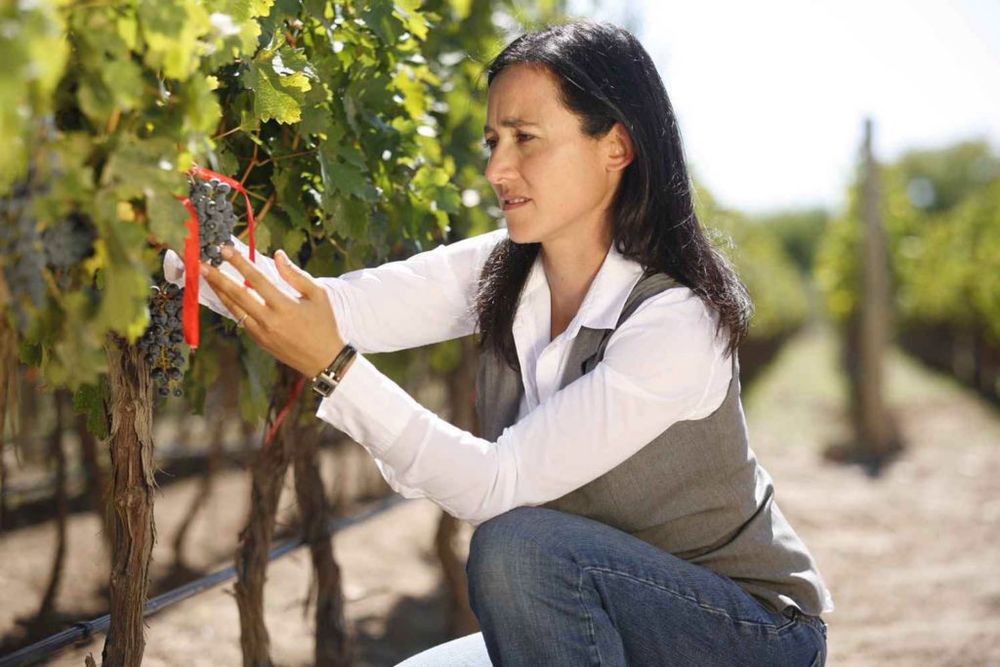
Laura Catena, of Bodegas Catena Zapata
High elevation wine production cannot be discussed without mentioning Argentina, home to the world’s highest vineyards. Argentinean Malbec has become a global phenomenon, with its spiritual home in Mendoza.
And in Catena’s Malbec Argentino we find freshness and alluring savoury, textural, graphite characteristics that speak of cooler climes.
Laura Catena, of Bodegas Catena Zapata, explains: “In Mendoza, climate can change dramatically in a short distance. For example, in a one hour drive you can go from the equivalent of the Languedoc to Champagne. For every 100m of elevation the average temperature usually goes down by one degree Celcius. However, in a vineyard at the same elevation and latitude, the microclimate of the vine can also vary according to the soil. If there are surface stones, the microclimate will be warmer and there will be less day-night temperature difference because the stones retain the day’s heat. But if the soils are made of clay, the microclimate is cooler by 1-2 degrees, which is a significant difference.”
The vineyards that produce Catena’s Malbec Argentino are found in the Uco Valley, a cool climate mountain region. The Adrianna Vineyard is in Gualtallary, a region at 5,000 feet elevation that was discovered by Laura’s father, Nicolas Catena. When he planted there in 1992 most people thought that grapes would never ripen at such a high elevation, however, the sun allows the Malbec grapes to ripen beautifully.
Catena also believes the textural characteristics are nursed into the wine using indigenous yeasts, and is undergoing studies to look at what site, climate and yeasts contribute to their wines.
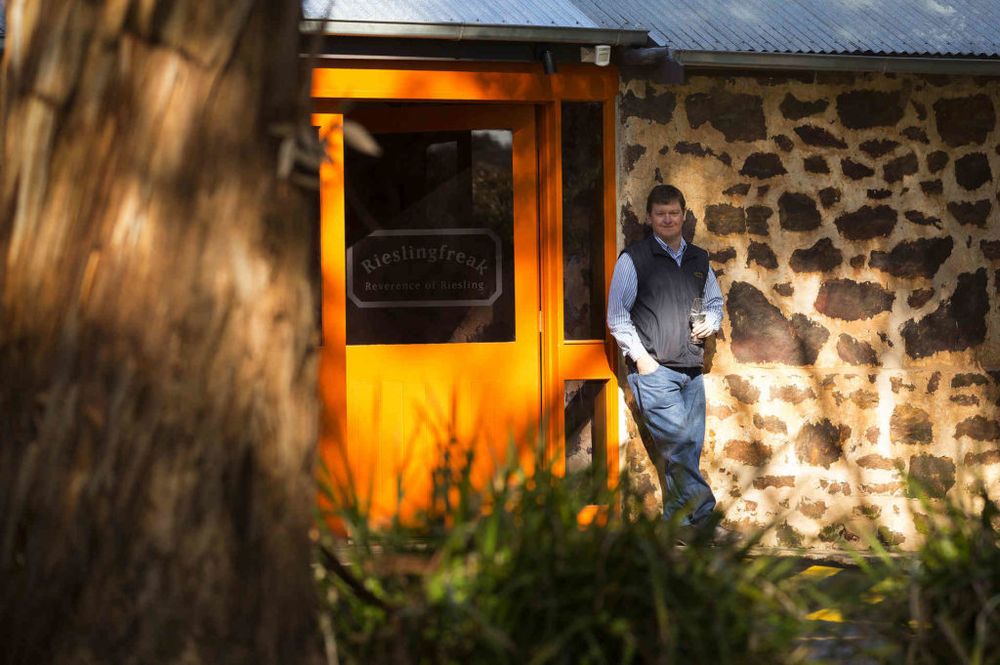
John Hughes
Riesling takes a holiday Down Under
On Tasmania, production of Sekt made from Riesling is possible due to temperatures comparable to those of Champagne. Ocean influence combined with trailblazers such as Josef Chromy – who fled his war-torn Czech village in 1950 as a penniless 19-year-old after Nazi and Soviet occupation – allows us to experience Riesling through a different lens.
Here, the Pepik Sekt comes from a single vineyard in Relbia, planted on black soils, with cracking vertosol over a Jurassic dolerite base. The marginally higher altitude produces cooler nights, which Jeremy Dineen, head winemaker, says: “Allows for retention of crisp, natural acidity, which is essential for sparkling grapes and gives structure, length and longevity to Riesling.” This is sparkling Riesling in its own unique Tasmanian flesh, with fresh minerality, zippy and beautifully integral acid structure, wet earth, honeysuckle, pear skin and pip goodness.
Meanwhile, in South Australia, John Hughes’ Rieslingfreak was born. Here, Riesling is sourced from Clare Valley, Eden Valley and Polish Hill. While not strictly cool climate, Rieslingfreak No. 4 comes from two vineyards between Eden Valley and Flaxman’s Valley. Altitudes of 500m cool the sites significantly, and the resulting wine is tight, crunchy, pure and structured, with green apple zest, lemon pith and a hard, stony core.
Hughes says: “Global warming has definitely been noticed. When we first purchased the family property in the Clare Valley in 1984, we were harvesting Riesling around 20 to 24 April. Nowadays we are harvesting Riesling in the last two weeks of February. We normally harvest Eden Valley three weeks after Clare, but the 2018 vintage saw us harvest Eden Valley one day before Clare!”
Tackling the effects of climate change in northern Italy
While global warming threatens, it is allowing winemakers to view their vines and wines in new lights. With challenge comes opportunity…
Alois Lageder’s ‘Comet’ series features limited edition wines resulting from experiments in the vineyards and the cellar, looking at rarer varieties and creative winemaking techniques.
The aim is to bring tension, freshness and precision to the wine in years when they have little acidity. Although Alto Adige in Italy is known for its cool, alpine climate, it is often very warm. Bolzano for example is often warmer than Rome. After noticing rising temperatures and reduced acid for some years now, the team has been working on ways to get more freshness into the wines. This includes research and plantings of higher-acid grape varieties in the 1980s, as well as adapting winemaking techniques.

Clemens Lageder
The comet PIPO XV is just one component of the Lageder PORER Pinot Grigio, which is made up of separately-vinified wines, made using different techniques: one part is pressed immediately after arrival at the estate, another is kept on skins for 15 hours, and the third (the PIPO XV) is kept in contact with stems and skins for about eight months, giving it a pink hue.
Clemens Lageder says: “Wine for us is always an interplay of different components… This is why we call it Pink Porer or PIPO. In 2018 it became not only part of the PORER Pinot Grigio, but we turned the component into a wine in its own right, a comet called PIPO XV.”
The wine is outstanding. Pinot Grigio, given its own skin to reside in, is able to produce wine of extreme fruit purity. The PIPO XV sings; it gives us peaches, apricot flesh, rock salt, crunch, minerality and rose petals, all in one bundle of pretty, golden-peach-bronze clad clothing. It is an elegant vinous being, clad in a silk gown.
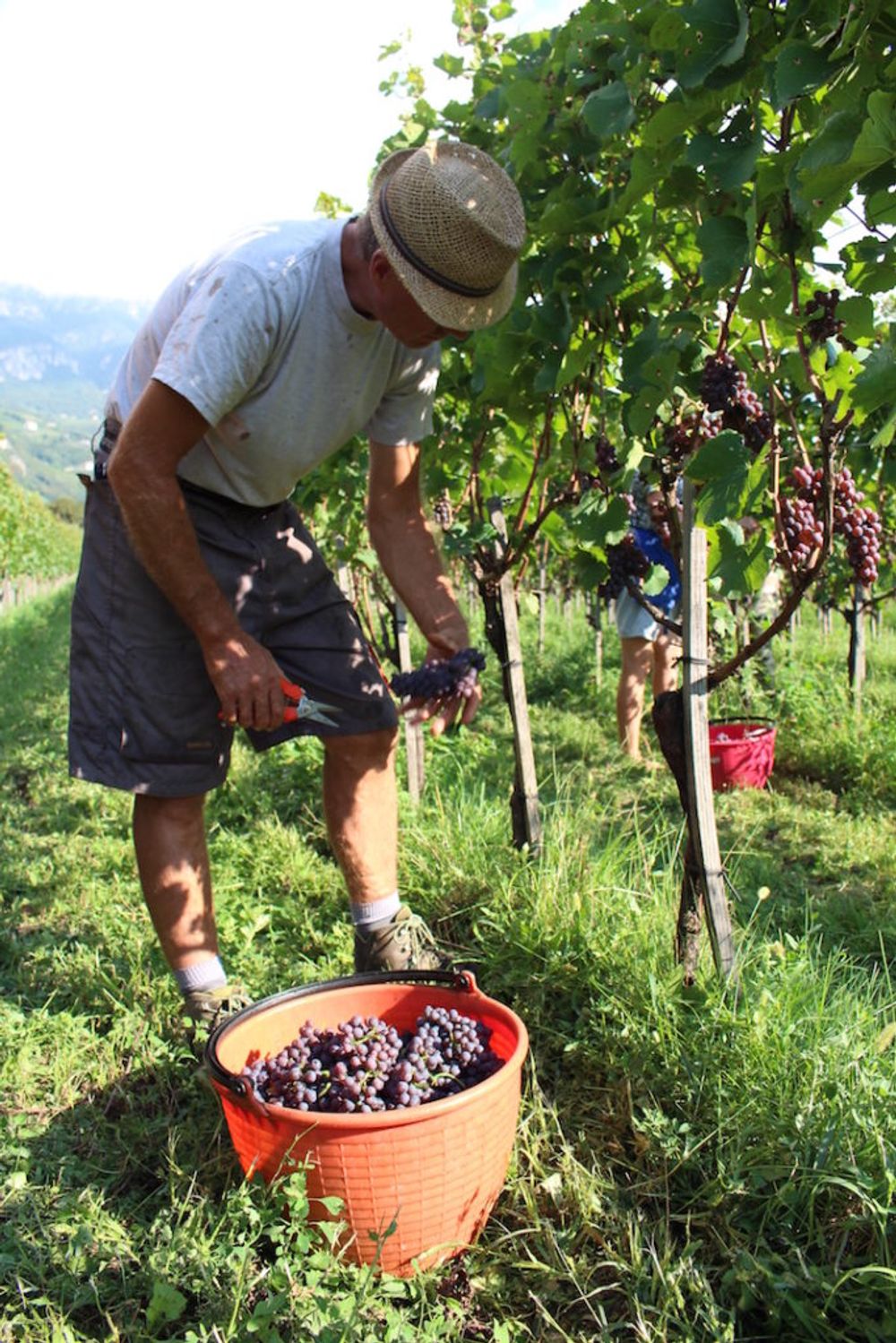
Harvest time at Alois Lageder, Alto Adige, Italy
From Tasmanian Sekt to Californian Syrah, these wines give us deep insight into where they come from. They wave their regional flags, while embracing their origins. They stand to speak of the human hand’s capacity to contribute to terroir; to guide grape and soil to create the most authentic results possible.
Growers united by love for indigenous grape varieties and the possibilities of cooler climates in otherwise warm pockets, climb higher and higher to bring us their fresh examples of Graciano and Trepat. Rare comets shoot across the sky and may only appear once, but stand for underlying issues of a warming planet. They introduce us to new ways of thinking; to redefine our preconceptions; to welcome contemplation.
This article originally appeared in Bibendum’s Fine Lees which you can view here






